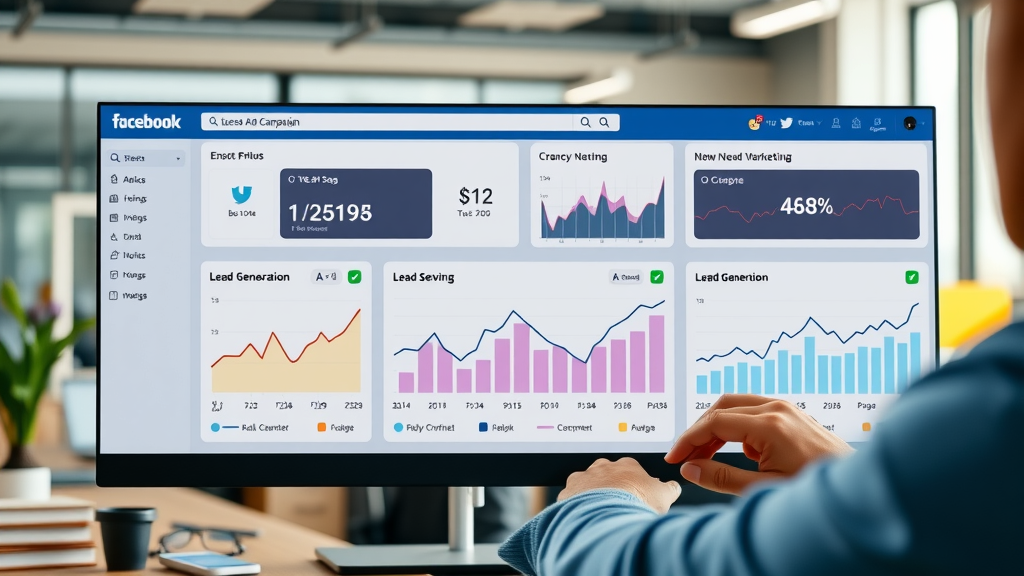Are You Struggling to Scale Paid Ads Effectively Regardless of Your Business Size?
Scaling paid ads is a critical yet challenging process that businesses of every size face. Whether you’re a startup trying to make your first impact or a multi-million dollar enterprise striving to maximize return on ad spend, knowing how to scale paid ads efficiently can be the difference between growth and stagnation. Many marketers fall into the trap of simply increasing budgets blindly, only to see disappointing results due to a lack of trust and poor ad fatigue management. This guide will demystify the process and equip you with actionable strategies to scale your paid campaigns successfully.
What You'll Learn
-
Key strategies for scaling paid ads from startups to $10 million+ businesses
-
How to optimize ad campaigns on platforms like Facebook and Google
-
Expert insights on overcoming common scaling obstacles
-
Tactics for improving return on ad spend (ROAS) and lead quality
-
Best practices for creative development and audience targeting
Understanding Scaling Paid Ads: Definitions and Core Concepts
What is Scaling in Ads and Why It Matters
Scaling paid ads refers to the process of increasing the volume and efficacy of advertising campaigns to drive more conversions and revenue without sacrificing performance. The ultimate goal is to expand your ad reach and spend while maintaining or improving key metrics like cost per acquisition (CPA), conversion rate, and return on ad spend (ROAS).
Why does scaling matter? Without effective scaling, growth plateaus and your business risks missing out on valuable market opportunities. However, scaling is not merely about throwing more money at ads. As Alex Hormozi, of Acquisition.com, explains, " The biggest obstacle in scaling paid ads is simply throwing more money at low-trust ads and expecting results. " This underlines the importance of trust, ad quality, and strategic budget allocation in scaling campaigns.

Difference Between Vertical Scaling and Horizontal Scaling in Paid Media
In the realm of scaling paid ads , understanding vertical versus horizontal scaling is crucial. Vertical scaling involves increasing your budget on existing successful ad campaigns, aiming to amplify what already works. This often involves expanding daily spend, adjusting bid strategies, or broadening audience targets within a single campaign.
Horizontal scaling, in contrast, involves launching new ad campaigns or ad sets targeting different audiences, platforms, or creative approaches to diversify risk and expand reach. Both strategies have unique benefits and challenges, and a savvy advertiser knows when to apply each based on performance data and business goals.
Measuring Performance: Key Metrics for Scaling Paid Ads
Effective scaling paid ads relies on rigorous measurement of key performance indicators (KPIs). Important metrics include:
-
Return on Ad Spend (ROAS): Revenue generated per dollar spent on ads, indicating profitability.
-
Cost Per Acquisition (CPA): Cost incurred to acquire a customer or lead, reflecting campaign efficiency.
-
Click-Through Rate (CTR): The percentage of users who click on an ad after seeing it, showing ad relevance.
-
Conversion Rate: The proportion of clicks that lead to a desired action (purchase, sign-up, etc.).
Tracking these metrics closely allows advertisers to understand when scaling efforts are successful or require adjustments.
"The biggest obstacle in scaling paid ads is simply throwing more money at low-trust ads and expecting results." — Alex Hormozi, of Acquisition.com
Scaling Paid Ads for Local and Small Businesses
Lead Generation Strategies for Local Businesses Using Facebook Ads
Local businesses benefit immensely from focused scaling paid media strategies tailored to their unique context. For example, Facebook Ads are ideal for lead generation in local markets due to their precise targeting capability and high trust levels among local consumers.
The most straightforward approach for local businesses is to run lead ads offering a tangible freebie or discounted offer. This entices cold traffic to enter your funnel. However, cold leads often require qualification. As Alex Hormozi explains, adding "good friction" like video sales letters (VSLs) or application steps helps filter for high-quality leads, improving cost efficiency and lead quality.
Setting a $19 to $29 offer is common, where customers pay a small fee to book, helping secure commitment and reduce no-shows. The follow-up sales process is vital: ideally, selling a longer-term plan either before or immediately after the initial treatment maximizes lifetime value.
Creating Effective Offers and Sales Funnels for High-Quality Leads
Effective sales funnels for local businesses are highly offer-driven. Unlike large brands where trust and brand-building take precedence, local leads often respond faster to clear, compelling offers that feel immediately valuable. For example, an acupuncture clinic might offer a discounted first session to obtain bookings and then upsell comprehensive treatment plans.
The funnel should incorporate layers of lead qualification, such as payments or video-based educational friction, to ensure leads are genuinely interested and reduce costly wasted ad spend.
"Local businesses benefit from offer-driven ads more than brand-building initially." — Alex Hormozi

Scaling Paid Ads for Mid-Sized Businesses: Case Studies and Strategies
Using Retargeting Campaigns to Maximize ROAS
For mid-sized businesses with steady traffic, retargeting ad campaigns are a powerful method for scaling paid media effectively . Retargeting campaigns focus on users who have already interacted with your brand by visiting your website or engaging with previous ads, increasing conversion likelihood and lowering acquisition costs.

Leveraging Customer Testimonials and Proof in Facebook Ads
Proof-based content such as customer testimonials and case studies form the backbone of effective scaling paid ads strategies for mid-sized companies. Ads featuring authentic client outcomes build trust and resonate powerfully with target audiences.
Alex Hormozi, of Acquisition.com, " 80% of our ad success comes from proof-based content, letting clients speak for the brand." Incorporating video testimonials, before-and-after success stories, and clear use cases can significantly uplift ad performance by removing skepticism.
Creative Optimization: Repurposing Winning Ads for Greater Reach
Scaling paid media is heavily reliant on creative optimization within your ad campaigns. Instead of constantly crafting new ads, the smartest advertisers reskin and repurpose proven winners. This approach extends the lifespan of top-performing creatives and scales impact exponentially.
Scaling Paid Ads for Large Enterprises and High-Revenue Businesses
Advanced Budget Allocation: The 70-20-10 Rule for Ad Creative Testing
Large enterprises with substantial ad budgets demand well-structured scaling frameworks. The popular 70-20-10 rule is a guiding principle for budget allocation in ad creative:
|
|
|
The 70-20-10 Budget Rule for Scaling Paid Ads |
|
Percentage |
Description |
Focus Area |
|---|---|---|
|
70% |
Core ad campaigns |
Proven winning creative focusing on the primary audience |
|
20% |
Adjacent campaigns |
Variants and permutations of winning ads targeting similar or new audiences |
|
10% |
Experimental campaigns |
Wildcard ideas designed to discover new opportunities and innovations |
This allocation ensures that most resources support stable growth, while allowing room for expansion and innovation.

Compliance and Risk Management in Regulated Industries
Scaling paid ads in tightly regulated sectors like healthcare or finance introduces challenges beyond typical marketing. Compliance with advertising policies, legal regulations, and platform rules is paramount to avoid costly ad shutdowns or penalties.
Engaging with compliance audit firms specializing in advertising can safeguard your campaigns. These firms ensure your creative and messaging meet guidelines while often facilitating expedited approval through established platform channels.

Scaling Paid Ads with Multi-Platform Strategies Including YouTube and Google Display Network
Large businesses benefit from deploying multi-platform strategies to diversify reach and leverage different user behaviors. Combining Facebook Ads with YouTube pre-roll campaigns and Google Display Network placements creates a cohesive funnel that captures users at every stage of their journey.

Optimizing Facebook Ad Campaigns for Effective Scaling
Creating and Managing Ad Sets for Maximum Impact
Facebook ads remain a cornerstone platform for scaling paid ads due to their granular targeting and massive user base. Properly designing and managing ad sets is critical for the success of your facebook ad campaigns. This includes segmenting audiences by behavior and demographics, testing different creatives and messages, and monitoring performance to allocate budget to the highest performers swiftly.

Lookalike Audiences and Custom Targeting Techniques
Utilizing facebook ad campaign features like Lookalike Audiences, advertisers can find new prospects resembling their best customers, significantly improving lead and conversion quality. Combined with custom targeting of existing email lists or website visitors, this approach laser-targets high-potential leads and enhances scaling effectiveness.
Scaling Paid Ads by Monitoring the Learning Phase and Adjusting Budgets
The Facebook pixel learning phase marks when Facebook’s algorithm optimizes for the best conversions. It’s vital not to ramp budgets too quickly during this period to avoid campaign burnout. Incremental budget increases combined with continuous data analysis ensure a smooth scale without sacrificing KPI performance.
Common Challenges and Solutions in Scaling Paid Ads
Avoiding Low Trust and Ad Fatigue
One of the most common pitfalls in scaling paid ads is diminishing trust due to repetitive or stale ads, leading to ad fatigue. Audiences become disengaged, causing CTR and conversion rates to drop.
To combat this, brands must consistently refresh creatives and diversify messaging. Additionally, adding trust signals like testimonials, transparent pricing, and proof points can rebuild and maintain audience confidence.

Balancing Lead Quality and Cost Per Acquisition (CPA)
Scaling paid ads often triggers a trade-off between acquiring large volumes of leads and keeping CPA low. Higher lead volume can mean lower quality, increasing downstream costs and churn.
Actionable Tips for Scaling Paid Ads Successfully
-
Analyze top-performing ads and replicate their first 3 seconds across campaigns.
-
Use retargeting across all platforms to maximize conversions.
-
Bundle products or services to increase average cart value.
-
Implement group funnels for nurturing and converting leads.
-
Continuously test and reskin winning creatives to extend ad lifespan.
People Also Ask (PAA)
What is scaling brands with paid ads?
Scaling brands with paid ads involves using paid media strategically to grow brand awareness, lead generation, and sales volume while maintaining campaign efficiency and profitability.
What is scaling in ads?
Scaling in ads is the process of increasing advertising spend and reach to maximize conversions and revenue without negatively impacting cost-efficiency.
How do you measure performance of paid ads?
Performance is measured by metrics like return on ad spend (ROAS), cost per acquisition (CPA), click-through rate (CTR), and conversion rates, which indicate how well ads are achieving business goals.
How much should you scale Facebook ads?
Facebook ad campaigns should be scaled incrementally, often by 10-30% budget increases once ad sets have stabilized post-learning phase. Rapid scale-ups can destabilize campaigns and increase costs.
Key Takeaways
-
Scaling paid ads requires strategic budget allocation and creative optimization to maintain performance.
-
Proof and trust-building content significantly improve ad effectiveness and conversion rates.
-
Local businesses should focus on offer-driven ads while larger businesses invest in brand, compliance, and multi-platform strategies.
-
Retargeting and audience segmentation are essential for maximizing ROAS and minimizing wastage.
-
Continuous testing and repurposing of creatives extend campaign longevity and improve scaling success.
Conclusion
Final Thoughts on Mastering Scaling Paid Ads Across Business Sizes
Mastering scaling paid ads is a multifaceted endeavor, requiring tailored strategies that account for business size, industry, and audience nuances. From local startups optimizing their lead funnels to large enterprises balancing compliance and multi-channel budgets, success hinges on trust, creative agility, and data-driven decision making.
"You only lose trust in the marketplace when you say something that isn't true. Focus on authentic proof to scale effectively." — Alex Hormozi, Acquisition.com
Call to Action
Call us at 207-710-1449 for all your marketing needs. Let us get your business more visibility and help you master the art of scaling paid ads successfully.
 Add Row
Add Row  Add
Add 








Write A Comment